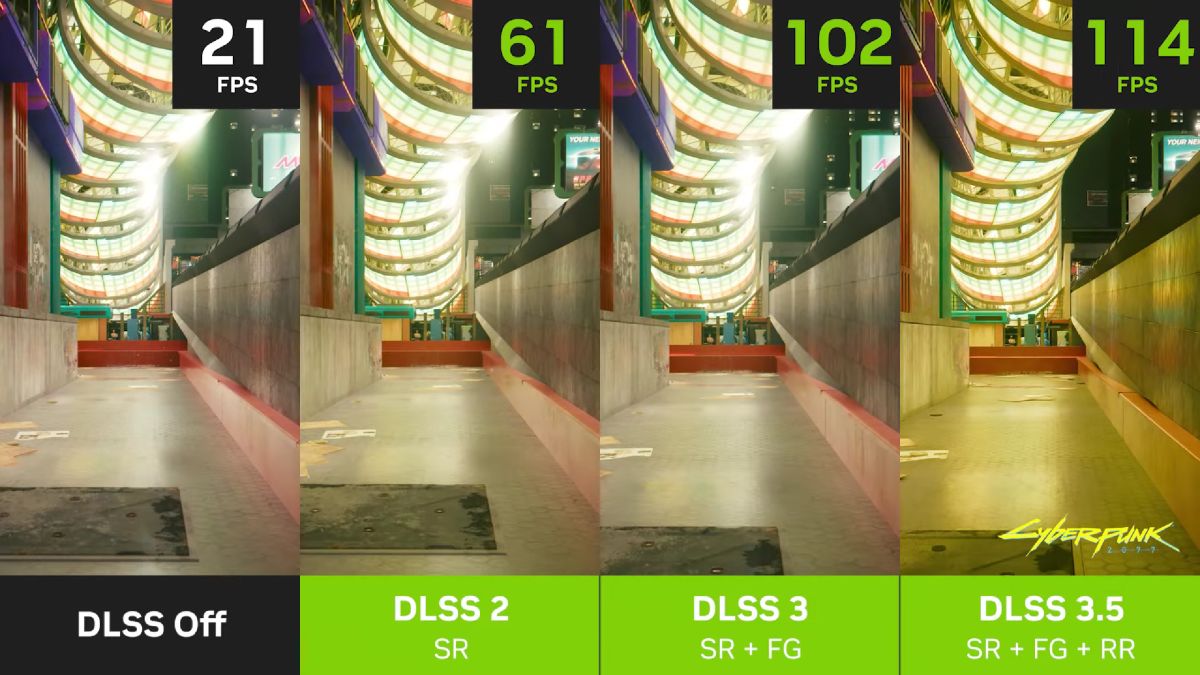NVIDIA is officially launching DLSS 3.5 today, in conjunction with Gamescom 2023. An update to DLSS 3, the GPU brand’s latest version of its AI upscaling engine now introduces a new tool, called Ray Reconstruction.
Technically speaking, Ray Reconstruction enhances ray traced image quality for all GeForce RTX GPUs by replacing hand-tuned denoisers with an NVIDIA supercomputer-trained AI network that generates higher-quality pixels in between sampled rays. To put that in laymen’s terms, the feature is an add-on to the DLSS 3.5 upscaling engine, made to support the currently existing Frame Generation technology, by correcting the way light sources in games interact with it’s environment.

Take Cyberpunk 2077 and its Overdrive Mode, also known as Path Tracing, as an example. With this mode activated, the game is able to provide a more detailed simulation of an immediate area. There’s just one problem with the mode: light sources that cycle through different colours, for example, don’t bathe the area in the same light source, as it usually would in the real world. Again, this is before DLSS 3.5 and a part of DLSS 3.
Enter Ray Reconstruction. With the feature, DLSS 3.5 now fixes the issue by reconstructing and more accurately diffusing light and particles. Of course, it goes without saying, but the new feature also gives a bump up in frames, provided the GPU is an RTX 40 Series.

NVIDIA’s DLSS 3.5 with Ray Reconstruction will be available later this year but that’s not the most exciting news about the technology. When it launches, Ray Reconstruction will be available for all GeForce RTX GPUs, and that means GPUs all the way back to the RTX 20 Series and not just the RTX 40 Series. Granted, you won’t have access to Frame Generation but at the very least, NVIDIA is allowing the technology to be paired with the likes of DLAA and Super Resolution.
(Source: NVIDIA)
Follow us on Instagram, Facebook, Twitter or Telegram for more updates and breaking news.



